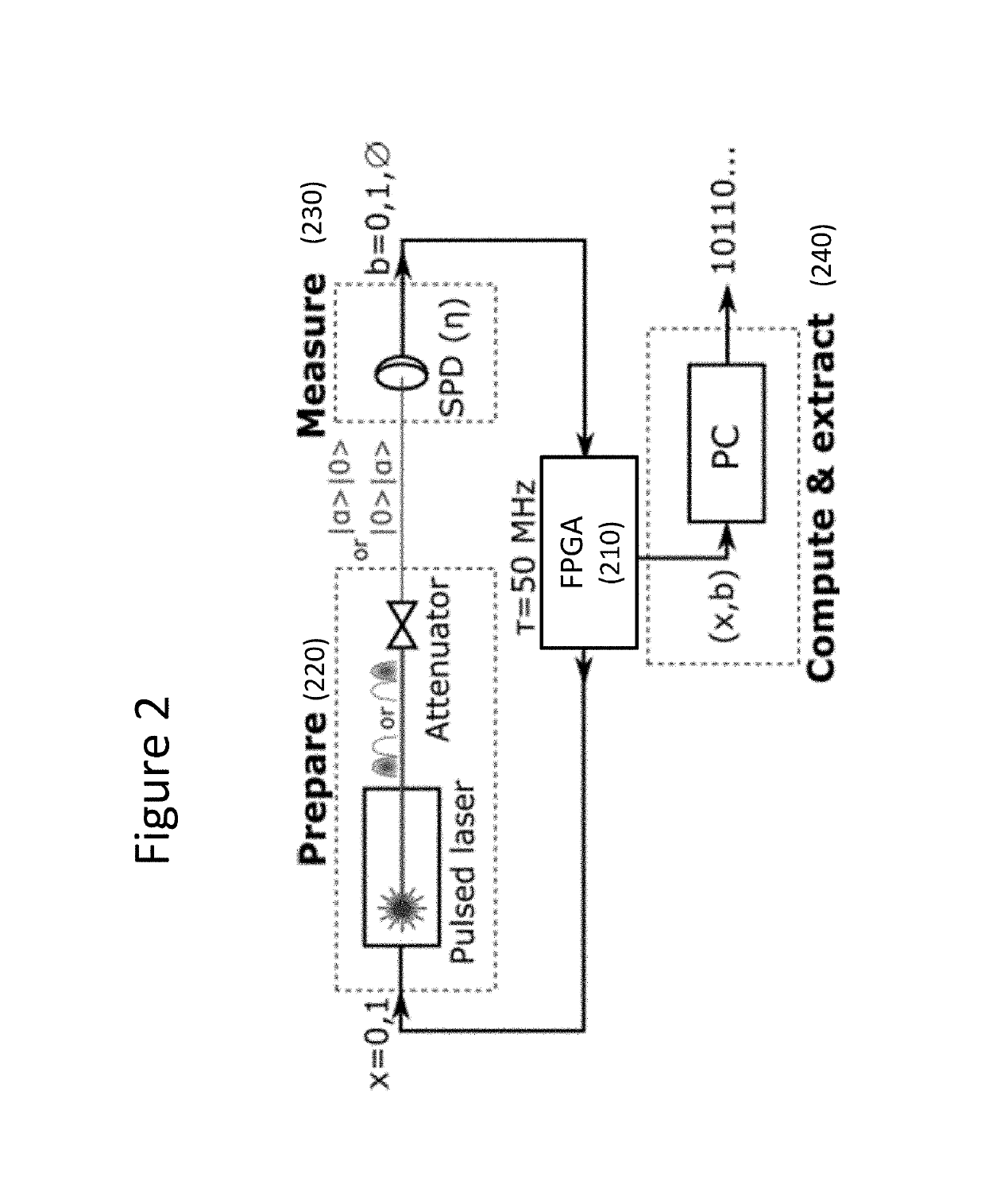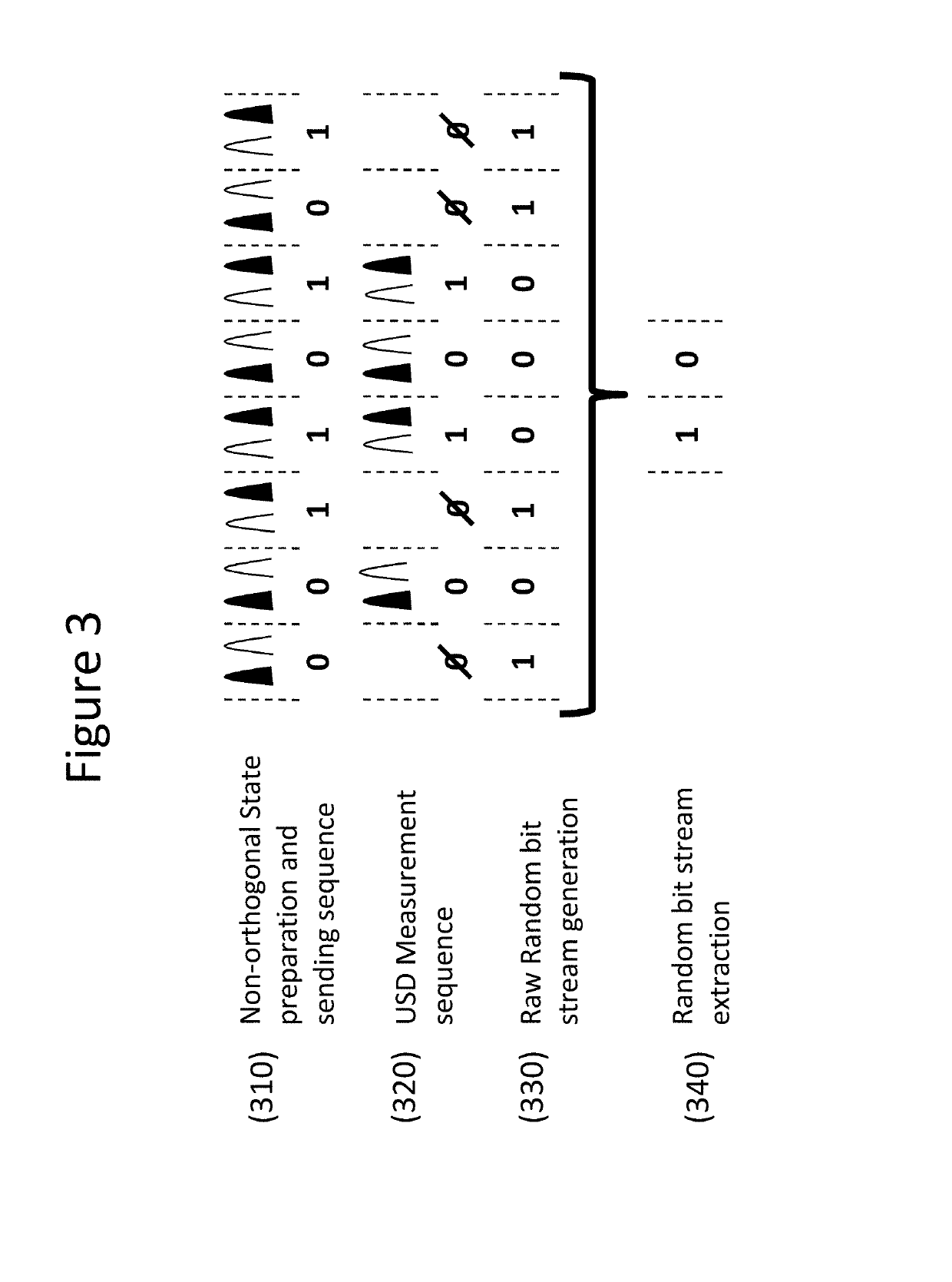Method and device for quantum random number generation
a quantum random number and device technology, applied in the field of quantum random number generators, can solve the problems of inability to predict easily, prone to loopholes in implementation, and difficulty in estimating the entropy generated by quantum processes, and separating it from the entropy
- Summary
- Abstract
- Description
- Claims
- Application Information
AI Technical Summary
Benefits of technology
Problems solved by technology
Method used
Image
Examples
Embodiment Construction
[0027]In the following, the invention is described in details with reference to the above-mentioned figures. FIG. 1 schematically represents the description of the principle while FIG. 2 treats a specific implementation of the approach. FIG. 3 is a general overview of the protocol and FIG. 4 presents the results obtained with the specific implementation of the random number generator. FIG. 5 is a detailed description of the method associated to the apparatus.
[0028]FIG. 1 schematically illustrates the principle of the quantum random number generator and its conceptual scheme where a source 110 prepares a physical system (130) in one of two (or possibly more) possible non-orthogonal quantum states according to an input bit x, and sends it to the measurement device 120. The measurement device 120 performs an unambiguous state discrimination (USD) measurement, and gives an output b. The output b is either conclusive, indicating which state was prepared by the source, or inconclusive if ...
PUM
 Login to View More
Login to View More Abstract
Description
Claims
Application Information
 Login to View More
Login to View More - R&D
- Intellectual Property
- Life Sciences
- Materials
- Tech Scout
- Unparalleled Data Quality
- Higher Quality Content
- 60% Fewer Hallucinations
Browse by: Latest US Patents, China's latest patents, Technical Efficacy Thesaurus, Application Domain, Technology Topic, Popular Technical Reports.
© 2025 PatSnap. All rights reserved.Legal|Privacy policy|Modern Slavery Act Transparency Statement|Sitemap|About US| Contact US: help@patsnap.com



